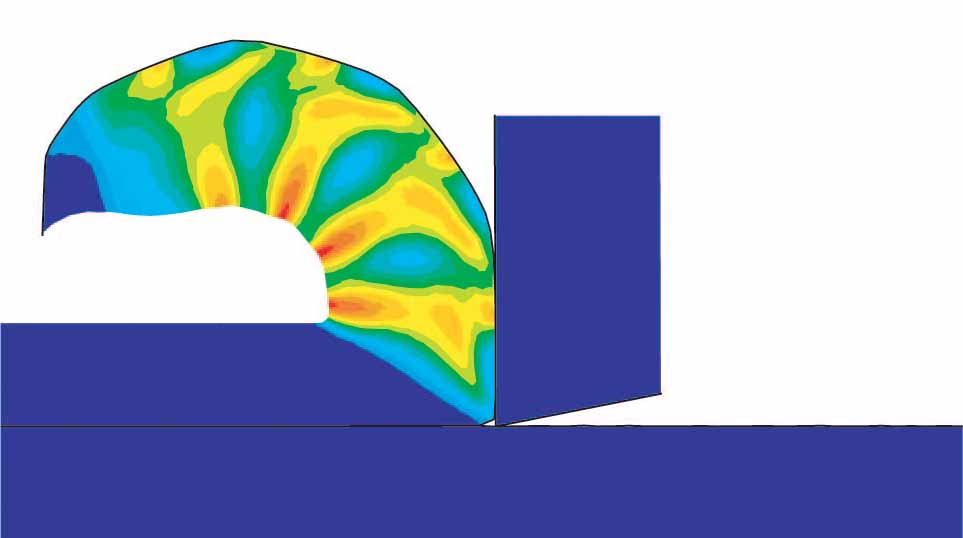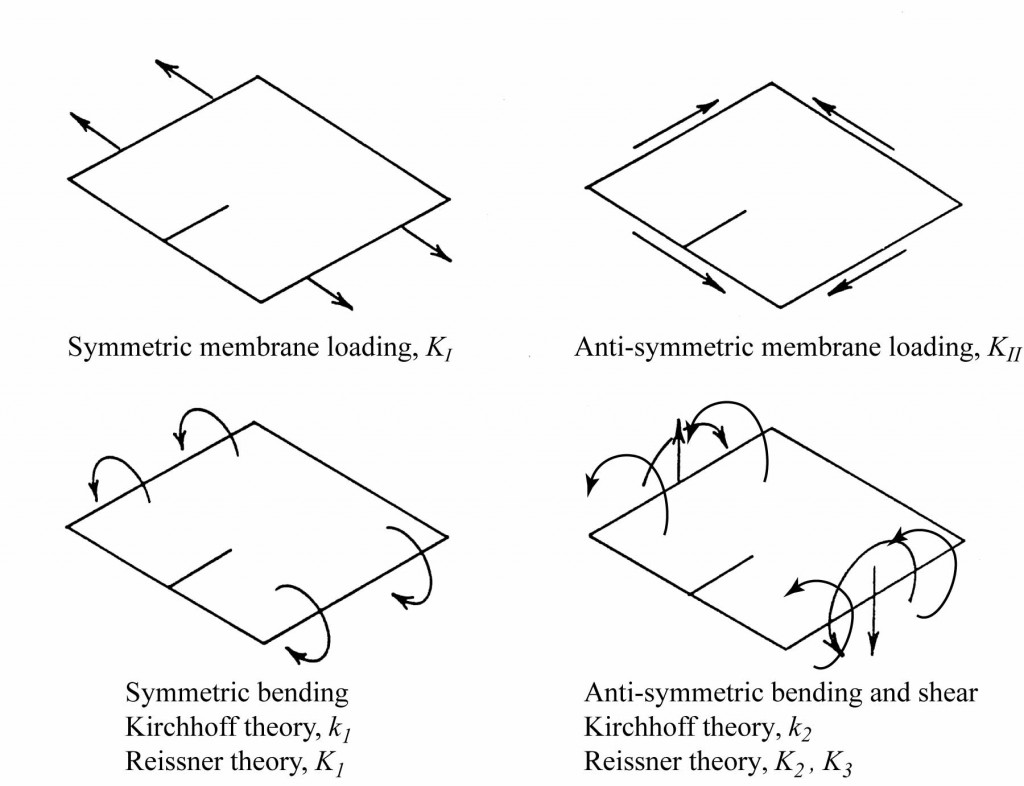Current Research Projects
-
Hydrogels and Elastomers
A hydrogel is a network of molecular chains into which water is absorbed and trapped, forming a material that is typically 90% or more water. Newly developed hydrogels consisting of stiff and soft interpenetrating networks can stretch like rubber. However, once they start to tear the damage is irreversible. By replacing the stiff network’s covalent bonds with bonds that can reform, the material can become self-healing. This project seeks to understand the physics and mechanics of such gels and to develop mathematical models that will explain the self-healing and other physical behavior and connect them to the types and density of cross-links. Elastomers share the soft mechanical properties of hydrogels and are often able to be deformed to very high stretches even in the presence of pre-existing cracks. Our work on elastomers focuses on time-dependent failure in PDMS. The experiments show that initial toughness is not well defined, as stable slow crack growth can occur over a range of applied loads. Our experiments demonstrate that there is a universal relation between crack growth rate and applied energy release rate. A model coupling the nonlinear elastic deformation and rate dependent bond scission is proposed and is in good agreement with experimental data. This work is supported by NSF grants CMMI‐1537087 and CMMI-1903308.
-
Nonlinear dynamics of MEMS oscillators
Simple nanoscale oscillators can exhibit a rich array of nonlinear behaviors. We study these dynamics using experiments, computation and theory. In particular our group has focused on opto-thermal limit cycle oscillators (LCO), identifying the conditions for the onset of LCOs, frequency tunability, the sub- and super-harmonic entrainment of these LCOs. Current work focuses on the self-synchronization and bistability in systems of pairs and arrays of oscillators coupled mechanically or electrostatically. Supported by NSF CMMI-1634664.
-
High Temperature Composite Materials
Graphite fiber-polyimide matrix composite materials systems are used for weight critical, high temperature applications up to 400ºC. Our current work focuses on developing approaches for predicting hygrothermal degradation of polyimides exposed to moisture at high temperatures. Delamination and blistering of moisture saturated neat resin and laminates under rapid heating was studied.
-
Strength of Nano-scale Structures
When Si is used as a structural material in micro- or nano-scale structures the size of a component is often smaller than the average distance between defects. In such cases, fracture is controlled by surface chemistry and surface features such as roughness or atomic steps. Our research focuses on measuring strength of Si nano-structures and the relation of strength to the mechanical and chemical state of the surface.
-
Damage Tolerance of Composite Structures
Composite laminate sandwich panels are well known for their high specific strength and stiffness. A concern is low energy impacts that may cause damage that remains undetected by visual inspection. The damage typically consists of matrix cracks, interlaminar delaminations and core crushing. The aim of this integrated experimental and numerical study is to provide design guidelines and experimentally validated predictive models for assessing the damage resistance and tolerance of sandwich structures.
Past Research Projects
- Virtual Labs, Real Data for Strength of Materials This project tests the efficacy of on-line, or virtual laboratories as supplements or replacements to laboratory exercises has been. We developed a web-based virtual laboratory on the subject of torsion. The lab contains data sets, videos of experiments, narrated presentations and assignments. The project was supported by the NSF CCLI program, DUE-01227434, and may be viewed at Virtual Labs, Real Data.
- Metal Cutting Heat generation due to plastic flow and friction in metal cutting plays an important role in determining the cutting force, in chip formation and in the dynamics of the cutting process. We performed high speed measurements of the temperature fields at the tip of a cutting tool. We combined these measurements with dynamic FEM simulations of the process. The goals of the project were to develop novel temperature measurement systems and to verify the performance of the simulations by comparing the measured and predicted temperature fields. This work was supported by the National Science Foundation (NSF), CMS-9700698.

Plastic strain computed by finite element simulation of orthogonal cutting of Ti-6-4 alloy - Thermal Imaging of Fracture During crack growth the energy of plastic deformation ahead of a crack in a ductile metal is largely dissipated as heat. Using high speed IR arrays I measured the temperature around a crack growing at high speed in structural metals. I have performed a number of experiments using infrared imaging to determine temperature fields at the tip of a growing crack. The temperature field can be analyzed to determine the flow of energy to the crack.
- Aircraft Structural Integrity By the late 1980’s the worldwide fleet of commercial aircraft was aging. Several aircraft structural accidents brought this issue to the forefront. In response, NASA started a program on aircraft stuctural integrity. Our work concentrated on experiments and theory related to fatigue crack growth in thin sheets of 2024-T3 aluminum under conditions of in-plane tensile and out-of-plane tearing loads.

Modes of fracture for thin plates under bending, shearing and torsion - Metal-Ceramic Interface Fracture Composite materials abound with interfaces, thus interfaces. The integrity of the interface is crucial to the reliability, and performance of composite.We performed a number of experiments on the toughness of silica-copper and alumina-nickel interfaces under mixed mode loading.
- Other Projects We have worked on a number of small projects, including fatigue fracture in copper-Kapton laminates (working with Prof. Daniel Swenson of Kansas State University), and modeling fault-propagation folding using the trishear model with Rick Allmendinger of the Cornell Geology Dept.